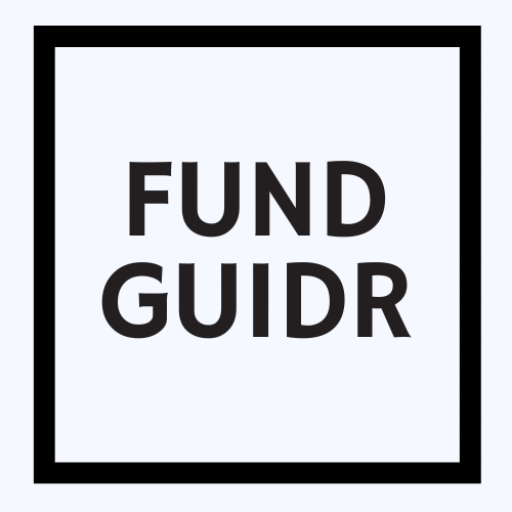Types of income, Part 1. Passive income
If you've been around social media or financial blogs in recent years, you'll have come across the term. "passive income". The dream of money flowing into your bank account as if by magic while you enjoy life, travel or just relax is appealing. It sounds like a "free lunch" in the financial world, and that's the impression many salesmen are trying to create. But is this really a reality or just a clever marketing ploy?
In reality, passive income is rarely fully passive, especially at the beginning. Before the money starts to work for you, you have to do most of the work - whether it's investing, setting up systems or raising seed capital. This article is the first of a two-part series that debunks the myths and gives a clear overview of what passive income really is and how to create it. In the second part, we will focus on active income, but let's start with the first thing that comes to many people's minds - making money while they sleep.

What is passive income? Money that works for you
In simple terms passive income the income you will receive without continuous and active work. Unlike a salary that you earn for every hour you work, with passive income the initial effort is directed towards creating something that later produces money automatically or with minimal intervention. Imagine you are planting a tree. You have to spend time and effort in the beginning preparing the soil, selecting the seedlings and watering the plants. Over time, the tree will grow big and start bearing fruit that you can harvest every year without much effort. You become a "tree owner" - a passive income earner. Your initial effort has paid off.
The concept of passive income is nothing new. Historically, it has been associated primarily with owning property or businesses. Today, however, thanks to technology and financial instruments, anyone can create multiple sources of income for themselves, even starting with very small amounts.
Classic sources of passive income
Here is an overview of the most common sources of passive income, which are highly relevant in Europe and Estonia.
1. Investing: dividends and funds
This is probably the most popular and accessible form of passive income. When you invest in shares, you become a shareholder in a company. Many large and stable companies distribute a share of their profits to shareholders. dividends in the form of. It's pure passive income - you don't have to do any extra work to get these payments. For example, many large telecoms companies, banks and utilities in Europe pay regular dividend. If you have invested in their shares, these payments will be credited to your account. There are also companies in the Baltic market that pay stable dividends.
Another option is to invest index funds (ETFs). This is one of the best ways to get started. The index fund itself buys shares in a wide range of companies around the world or in a specific region. This way, you spread your risk and get a share of the overall economic growth. Many index funds also pay dividends that accumulate in your account. It's passive because you don't have to pick stocks. You just buy fund shares and let the money grow.
2. Rental income from real estate
A classic and timeless source of passive income. If you own a property (e.g. an apartment or house), you can rent it out and earn a monthly income. However, this is a good example of how passive income can be quite active. If you deal with tenants yourself, solve problems and maintain the property, you are essentially doing a job. To make it truly passive, you could hire a property management company to do it all for you. Of course, this will reduce your profits, but it will save you time. The main disadvantage is the large initial capital.
Alternatively, you can use crowdfunding platforms, which allow for investing in real estate projects with smaller amounts. For example, you can choose a project you like on the platform (e.g. a residential development) and invest in it, receiving interest income in return. Your risks are diversified, but you also have to take into account the risk of the platform going bankrupt or the project failing.
3. Digital products and royalties
In the digital world, new opportunities have emerged to generate passive income. If you have the knowledge or skills, you can create digital products, which can be sold repeatedly. For example, an e-book, an online course, photos for websites, digital diaries, or even a mobile app, and much more. The main work is the creation of the product, the marketing and the initial promotion, after which the product can sell itself. Each sale brings you revenue without having to do the same work again. Digitally created products can also be sold in physical form. For example, a company like Printify has helped countless people get started with this business model.
A similar situation is with royalties - if you write a book, a song or make a piece of art, you get paid every time it's used. Many bloggers earn partnerships (affiliate) through passive income. They include links to products or services in their articles and receive a commission on each transaction. Once you've built up strong content and a loyal audience, these links will continue to earn you money for years after the article is published.
4. Lending on P2P platforms
One popular way to earn extra income is by investing in loans through the P2P (peer-to-peer) platforms. These platforms connect lenders and borrowers. You lend money to another person or company and receive interest income in return. Your aim is to lend out small amounts to many lenders to spread the risk. Many platforms also have automatic investment features that make the transactions for you, making the process passive. However, you should be aware that lending is always risky and there is a risk that the borrower will not be able to repay the loan.
5. Deposits and bonds
Although interest rates on bank deposits are often low, they are a classic source of passive income. Deposit in this case, you earn interest just for having your money sitting in the bank. However, the return on deposits is largely dependent on the state of the general economy. Interest rates can vary many times depending on the economy, and therefore the return on deposits will also fluctuate. A similar, but slightly riskier, and higher yielding for the shadow class on bonds. When you buy a government or corporate bond, you are lending money to the institution and receiving regular interest payments. This is passive income, because once you have made the purchase, it no longer requires any action on your part.
Passive income in practice: a case study
To make passive income easier to understand, let's look at a practical example.
Liisa's blog and social media journey
Liisa is 25 years old and loves travelling. She decides to start a blog and an Instagram account where she shares travel stories, recommendations and photos. For the first two years, she actively invests her time in creating content: writing posts, taking photos, editing and interacting with followers. It's a purely active job that doesn't generate any income at first. Liisa knows she is building a foundation.
As time goes by, his audience grows to be considerable. He starts to notice the first passive income opportunities:
- Affiliate-lingid: Liisa includes affiliate links to hotel booking sites and travel equipment websites in her articles and video descriptions. If someone makes a purchase through her link, she earns a commission. These links work even when he is not travelling and not creating new content.
- Digital product: Liisa is putting together an e-book "Europe with a backpack: 20 unforgettable itineraries", which is available on her website. This product generates revenue 24/7, without Liisa having to spend time with each individual buyer. The initial work is a lot, but sales are automatic.
- Old posts: Its older but meaningful posts and photos, optimised for Google search engines, continue to bring in new visitors and customers for years after their creation.
Lisa's example shows that passive income does not happen overnight. It is a long-term process, with a lot of work done at the beginning. At the same time, she has systems and content in place in her "money tree" that provide income even when she herself is resting or working on other projects. His passive income will grow over time, creating more financial freedom in the future.

Summary
Passive income is not a myth, but it is not free either. It requires time, money and discipline at the start. The most important thing is to understand that it is a long-term strategy. By starting early, your 'money tree' will grow large and fruitful over time, giving you financial freedom and choice in the future.
In the next article, we will delve into the world of active income and explore how to make the most of your main source of income to build a strong foundation for both passive and active income growth.
